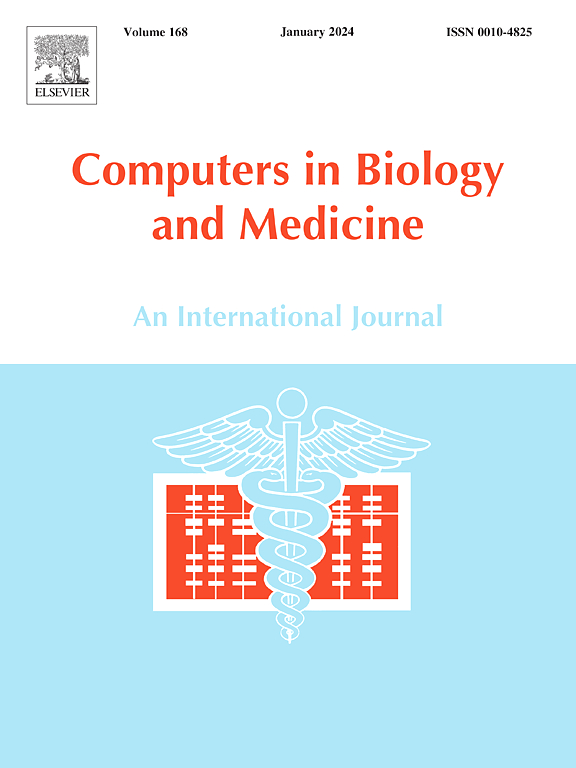A rule-based clinical decision support system for detection of acute kidney injury after pediatric cardiac surgery
IF 7
2区 医学
Q1 BIOLOGY
引用次数: 0
Abstract
Background
Acute kidney injury (AKI) is common in children with congenital heart disease following open-heart surgery with cardiopulmonary bypass (CPB). Early AKI detection in critically ill children requires clinician expertise to compile various data from different sources within a stressful and time-sensitive environment. However, as electronic health records provide data in a machine-readable format, this process could be supported by computerized systems. Therefore, we developed a time-aware, rule-based clinical decision support system (CDSS) to detect, stage, and track temporal AKI progression in children.
Methods
We integrated retrospective clinical routine data from n = 290 randomly selected cases (n = 263 patients, aged 0–17 years) who underwent cardiac surgery with CPB into a dataset. We adapted Kidney Disease: Improving Global Outcome (KDIGO) criteria, including serum creatinine, urine output, and estimated glomerular filtration rate, and translated them into computable rules for the CDSS. As a reference standard, patients were manually assessed by blinded clinical experts.
Results
The AKI incidence, according to the reference standard, was n = 146 cases for stage 1, n = 58 for stage 2, and n = 20 for stage 3. The CDSS achieved sensitivities of 92.2 % (95 % CI: 86.8–95.5 %) for AKI stage 1, 88.1 % (95 % CI: 77.2–94.2 %) for stage 2, and 95 % (95 % CI: 70.5–99.3 %) for stage 3. The specificities were 97.0 % (95 % CI: 94.4–98.4 %), 98.5 % (95 % CI: 96.5–99.4 %), and 99.3 % (95 % CI: 97.3–99.8 %), respectively.
Conclusions
We demonstrated that a CDSS is able to perform a complex AKI detection and staging process, including 11 criteria across three stages. For accurate automated AKI detection, standardized machine-readable data of high data quality are required. CDSS with high diagnostic accuracy, like presented, can support clinical management and be used for surveillance and quality management. The prototypical use for surveillance and further studies, such as the development of prediction models, should demonstrate the system's benefits in the future.
基于规则的儿科心脏手术后急性肾损伤检测临床决策支持系统
背景:急性肾损伤(AKI)常见于先天性心脏病患儿在体外循环(CPB)开胸手术后。危重儿童的早期AKI检测需要临床医生的专业知识,以便在压力和时间敏感的环境中从不同来源收集各种数据。然而,由于电子健康记录以机器可读的格式提供数据,这一过程可以由计算机化系统支持。因此,我们开发了一个有时间意识的、基于规则的临床决策支持系统(CDSS)来检测、分期和跟踪儿童AKI的时间进展。方法我们将随机选择的n = 290例(n = 263例,年龄0-17岁)接受CPB心脏手术的回顾性临床常规资料纳入数据集。我们改编了肾病:改善总体预后(KDIGO)标准,包括血清肌酐、尿量和估计的肾小球滤过率,并将它们转化为CDSS的可计算规则。作为参考标准,患者由盲法临床专家手工评估。结果根据参考标准,ⅰ期AKI发生率为146例,ⅱ期为58例,ⅲ期为20例。CDSS对AKI 1期的敏感性为92.2% (95% CI: 868 - 95.5%),对2期的敏感性为88.1% (95% CI: 77.2 - 94.2%),对3期的敏感性为95% (95% CI: 70.5 - 99.3%)。特异性分别为97.0%(95%置信区间CI: 94.4 - -98.4%), 98.5% (95% CI: 96.5—-99.4%)和99.3% (95% CI: 97.3—-99.8%),分别为。我们证明了CDSS能够执行复杂的AKI检测和分期过程,包括三个阶段的11个标准。为了实现准确的AKI自动检测,需要标准化的高质量机器可读数据。CDSS具有较高的诊断准确率,可以支持临床管理,用于监测和质量管理。用于监测和进一步研究的原型应用,如预测模型的开发,应该会证明该系统在未来的好处。
本文章由计算机程序翻译,如有差异,请以英文原文为准。
求助全文
约1分钟内获得全文
求助全文
来源期刊

Computers in biology and medicine
工程技术-工程:生物医学
CiteScore
11.70
自引率
10.40%
发文量
1086
审稿时长
74 days
期刊介绍:
Computers in Biology and Medicine is an international forum for sharing groundbreaking advancements in the use of computers in bioscience and medicine. This journal serves as a medium for communicating essential research, instruction, ideas, and information regarding the rapidly evolving field of computer applications in these domains. By encouraging the exchange of knowledge, we aim to facilitate progress and innovation in the utilization of computers in biology and medicine.
 求助内容:
求助内容: 应助结果提醒方式:
应助结果提醒方式:


